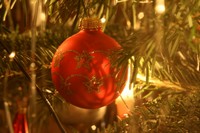Autumn is almost here and Budapest will welcome visitors with great programs and exhibitions. If you want some culture, you definitely should visit the Hungarian National Museum, where you can see the famous photographer, Robert Capa’s exhibition between 18 September 2013 and 12 January 2014.
 Friedmann Endre was born in 1913 in Budapest. He started to pay attention for photography in early 30s as a hobby, but he realized that it could be great livelihood. Before the Second World War he studied journalism in Berlin, but he had to leave the city because of his Jewish origin. After that he moved back to Budapest for a while, but because of the harder and harder anti-Semitism he immigrated to Paris. His life was hard in the French capital too, so he decided to devote his life to photography, he changed his name to Robert Capa after his nickname, “Shark” (Shark in Hungarian is Cápa). The new name brought referrals to him and shortly he became Capa, the famous documentary and war correspondent. The Hungarian photographer travelled around five war places with his machine: the Spanish civil war, the Chinese inquisition of Japan, the Second World War’s European places, the first Arab-Israel conflict and Indochina. He died on the last place, when he stepped on a grenade during work.
Friedmann Endre was born in 1913 in Budapest. He started to pay attention for photography in early 30s as a hobby, but he realized that it could be great livelihood. Before the Second World War he studied journalism in Berlin, but he had to leave the city because of his Jewish origin. After that he moved back to Budapest for a while, but because of the harder and harder anti-Semitism he immigrated to Paris. His life was hard in the French capital too, so he decided to devote his life to photography, he changed his name to Robert Capa after his nickname, “Shark” (Shark in Hungarian is Cápa). The new name brought referrals to him and shortly he became Capa, the famous documentary and war correspondent. The Hungarian photographer travelled around five war places with his machine: the Spanish civil war, the Chinese inquisition of Japan, the Second World War’s European places, the first Arab-Israel conflict and Indochina. He died on the last place, when he stepped on a grenade during work.
The National Museum would like to show Capa’s all habits, passions and life style between 18 September 2013 and 12 January 2014.
Robert Capa exhibition
September 18th – January 12th
Hungarian National Museum
 There are so many interesting attractions in a foreign country’s capital or other cities, but when the temperature reaches the 30 or more degrees, people would like to spend their free time at the beach or in a spa, but not in a museum. But here comes the time, and the capital of Hungary, Budapest knows it!
There are so many interesting attractions in a foreign country’s capital or other cities, but when the temperature reaches the 30 or more degrees, people would like to spend their free time at the beach or in a spa, but not in a museum. But here comes the time, and the capital of Hungary, Budapest knows it! We do not have a full list of museums open in this period, but here you can find some general information which will hopefully help you. What we can tell is this general information:
We do not have a full list of museums open in this period, but here you can find some general information which will hopefully help you. What we can tell is this general information:
